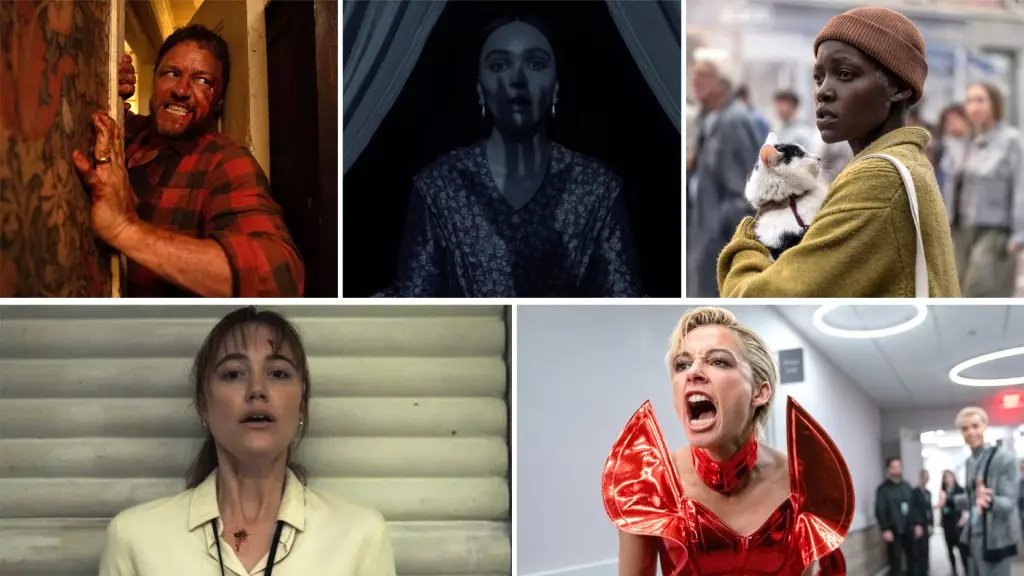The landscape of cinema in 2024 is decidedly marked by the triumphant return of the mid-budget horror film, suggesting a seismic shift in how audiences engage with genre storytelling. The financial success of smaller productions is particularly significant in today’s largely inflated marketplace, where tentpole blockbusters often consume the conversation—and the budgets. While the traditional studios may be stuck in a cycle of creating excessively high-cost films, it’s becoming abundantly clear that effective storytelling paired with strategic budgeting can yield returns that rival or surpass those blockbuster giants.
Take, for instance, the phenomenal performance of “A Quiet Place: Day One.” This prequel to the celebrated horror franchise catapulted into profitability with a staggering net profit of $83.6 million. Its financial success is not merely a stroke of luck but a testament to the enduring power of narratives that resonate with audiences at an emotional level. By relocating the horrors of alien invasion to an apocalyptic New York, filmmakers effectively merged a popular vision with the thrill of fear while keeping production costs controlled. It seems that amid the rely on star power and flashy effects, simpler, yet compelling storytelling makes a powerful case for the return of mid-tier productions.
Reimagining Classics: The ‘Nosferatu’ Phenomenon
Then there is “Nosferatu,” a film that defies expectations in every sense. Expected to be yet another addition to the well-trodden path of horror cinema, this modern retelling of the Dracula tale emerged from the shadows to profit an exceptional $70 million. The audacity of its creators lies not just in the retelling of the classic story but in its marketing strategy—a masterclass in how to pique curiosity without giving away the essence of the film.
Their approach—maintaining an air of mystery, as embodied by the tagline “He is coming!”—serves as a reminder that in an age where spoilers are ubiquitous, the allure of the unknown is still extremely powerful. While traditional filmmakers scramble for audience approval through the inclusion of star-studded casts, “Nosferatu” reminds us of the charm and excitement of stories that thrive on intrigue, high production values, and meticulous storytelling.
The Rise of Innovative Marketing: ‘Smile 2’ and Its Strategic Approach
With a net profit of $55.4 million, “Smile 2” demonstrates how innovative marketing can uplift even a sequel shaped by its predecessor’s streaming roots. By bouncing back from initial streaming release hesitancy to a theatrical success, the film showcases the marketing prowess needed to create buzz around a franchise. From guerrilla marketing campaigns featuring cheerful yet unsettling performers invading public spaces to a savvy integration of social media strategies aimed at youth, the creators understood the desires of their audience.
The combination of artifacts from pop culture interspersed with horror consistently keeps audiences engaged—a recipe for genuine excitement that revitalizes the horror genre. This relationship between filmmakers and audience, fueled by interactive experiences, represents a contemporary pivot toward more engaging promotional tactics that still retain the allure of nostalgia.
Subverting Expectations: Blumhouse’s ‘Speak No Evil’
In its own thrilling iteration, “Speak No Evil” captures the essence of Blumhouse’s innovative directives—proving that narratives can challenge conventional storytelling formats while retaining commercial viability. Grossing a net profit of $50 million from a modest production budget, this film manages to explore disturbing themes through an effective juxtaposition of horror and everyday situations, showcasing how the ordinary can become profoundly sinister.
Moreover, Blumhouse’s stronghold on budgeting formulas allows its projects to exploit new storytelling methods without the peril of excessive overreach. By prioritizing originality over areas that typically attract financial investment, the studio celebrates the craft of filmmaking as a serious art form. Their success also validates the belief that a self-aware pivot away from overproduction can lead to resonant and meaningful viewer experiences.
The Independent Streak: Neon’s Surge with ‘Longlegs’
Neon’s unexpected success with “Longlegs” reinforces the idea that audiences are receptive to independent storytelling that brazenly tackles themes often ignored by larger studios. Bringing a serial killer narrative adorned with artistic presentation to the forefront, this film took filmmakers and critics alike by surprise with a $48 million profit.
By aspiring to a unique aesthetic—a synergy of dark themes with contemporary marketing strategies—Neon broke new ground and ushered in a fresh wave of independent cinema that doesn’t shy away from bold choices. Not only did they enhance their box-office standing with innovative presentations, but they also demonstrated that when lower-budget films are coupled with acute attention to creativity, they can transcend the conventional expectations set by larger-scale productions.
The 2024 cinematic landscape is indeed diverse and fresh. It signals a movement towards embracing creativity over extravagance, and the commercial viability of mid-budget films is now more evident than ever.

